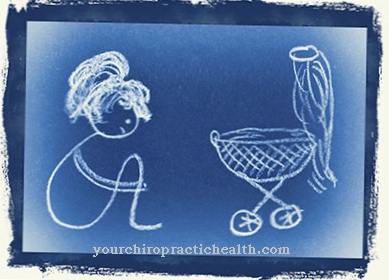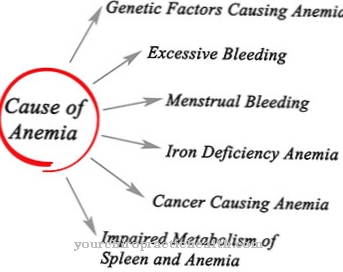Of the Trapezius muscle, of the Trapezius, due to its location and anatomical shape, is also called Hood muscle designated. It consists of three parts.
What is the trapezius muscle?
The trapezius muscle (Musculus trapezius) is located in the area of the neck and upper back. It is divided into three different sections, each with a different function. Paralysis of the trapezius muscle leads to shoulder obliquity and pain. Different movements are no longer possible if the trapezius muscle is paralyzed.
Anatomy & structure
The trapezius muscle consists of three parts in humans. The descending part (pars descendens) is located above the shoulder blade. This part of the trapezius muscle originates from the occipital bone (os occipitale) and the neck ligament.
The neck ligament is a pair of ligaments that runs from the occiput to the spinous process of the seventh cervical vertebra. The upper cervical vertebrae also serve as a point of origin for the descending part of the trapezius muscle. The start of this muscle part is in the lateral third of the collarbone. The pars transversa, the traversing part of the trapezius muscle, is located between the thoracic vertebrae and is known as the middle hood muscle. The origin is the seventh cervical vertebra and the first three vertebrae of the thoracic spine. The muscle attachment is the acromion. The Acromion is also known as the bone corner. In humans it forms the highest point of the shoulder blade.
The third part of the trapezius muscle is the ascending part. This ascending part lies below the shoulder blade. The origin of the lower hood muscle are the thoracic vertebrae four to twelve. The starting point, however, is the spina scapulae. The spina scapulae is the shoulder bone that runs across the back surface of the shoulder blade and divides the shoulder blade into the infraspinate and supraspinous fossa. Occasionally the trapezius muscle is also fused with the sternocleidomastoid muscle.
This muscle is also known as the nod or head turner. It is located between the sternum, collarbone and base of the skull. Both muscles develop from a common system and are also supplied by the same nerve (accessory nerve). The typical lateral cervical triangle (regio cervicalis lateralis) is only created through the separation of the joint application of the muscles.
Function & tasks
The individual sections of the trapezius muscle have almost opposite directions of action, so that the muscle can fulfill different functions. The Pars descendens, the descending part, is responsible for turning the head. Raising the shoulders is also part of the area of responsibility of this muscle segment. The descending parts are mainly trained in strength training and bodybuilding. A well-trained descending part of the trapezius muscle means that the shoulders remain stable and not sink, even when carrying heavy loads.
A contraction of the middle hood muscle (pars transversa) causes the shoulders to contract by contracting the shoulder blades. The ascending pars, the ascending part of the trapezius, lowers the shoulders. Raising the trunk with the arms fixed is also possible thanks to the ascending trapezius muscle.
You can find your medication here
➔ Medicines for muscle weaknessDiseases
Pain in the neck and upper back is often due to tension in the trapezius muscle. The most common cause of this tension is sitting for long periods in unergonomic positions. Impairments to the trapezius muscle are particularly common in people who work a lot at the computer or who often sit at their desks.
An unfavorable sleeping position, bad posture and heavy strain during sport can also lead to tension in the trapezius muscle. It is not uncommon for the tension and muscle hardening to be based on emotional stress and psychosomatic causes. Shoulder bags are another risk factor for tension in the trapezius muscle. If you carry bags on one side of your shoulder, you often pull the affected shoulder up so that the bag strap does not slip off your shoulder. As a result, half of the descending pars work permanently, so that tension can quickly arise.
Impairments of the trapezius muscle are manifested by pain in the neck area, pain in the upper back and shoulder or often also by headaches. The muscles tire quickly, so that lifting the arms or shoulders is only possible for a short period of time. Sooner or later, the constant tension also leads to signs of wear and tear in the cervical and thoracic spine. The vertebrae, the intervertebral joints and the intervertebral discs are particularly affected. One possible consequence is acute or chronic neck-arm or shoulder-arm syndrome. These phenomena are popularly known as lumbago.
If the impairment of the trapezius muscle appears as a head and neck syndrome, symptoms such as dizziness, flickering eyes and ringing in the ears are also possible. The so-called cervical marrow syndrome develops less often. Due to the degenerative changes resulting from the tension in the trapezius muscle, the intervertebral disc bulges in the area of the cervical spine. This narrows the spinal canal and presses the cervical medulla. An acute contusion can lead to paralysis of the arms and legs. However, it is rather rare. More often, the damage will develop more slowly. Gait disorders, tingling and disorders of fine motor movements are typical.
If the trapezius muscle is paralyzed by a disease, this paralysis is shown by a depression of the diseased shoulder. The middle edge of the shoulder blade protrudes obliquely and points from the top outside to the inside below. If the arm is to be raised to the side, this is only possible for a small section. It is not possible to raise it to the horizontal. The hold of the shoulder blade on the spine is also severely impaired.

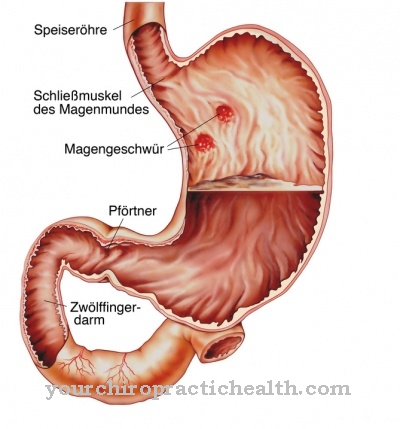
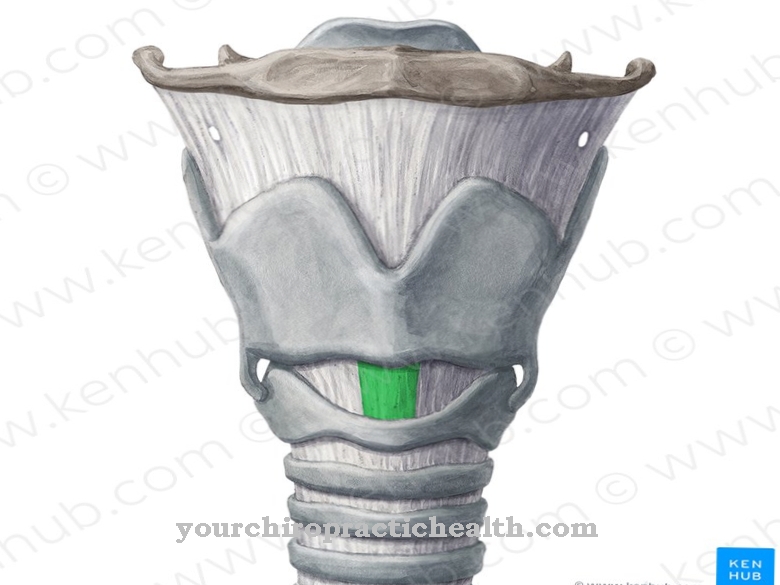

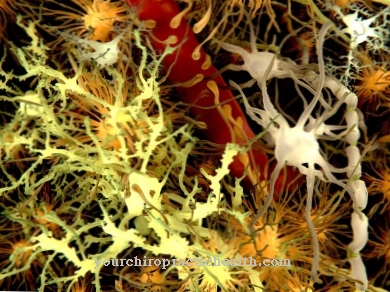





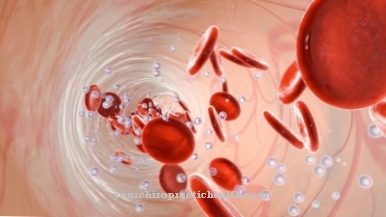


.jpg)

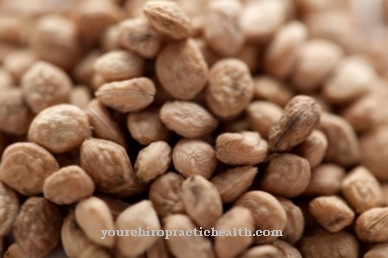






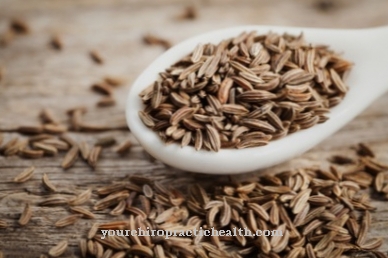

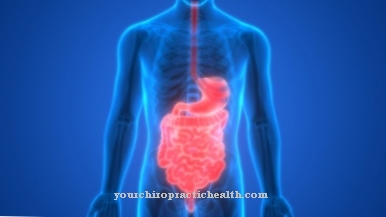
.jpg)
